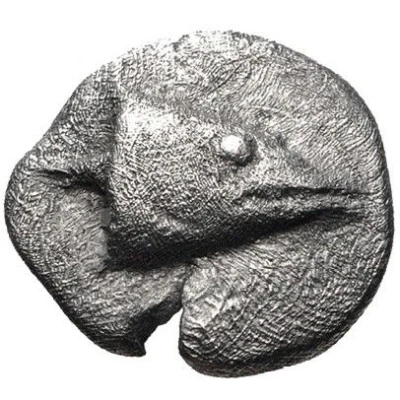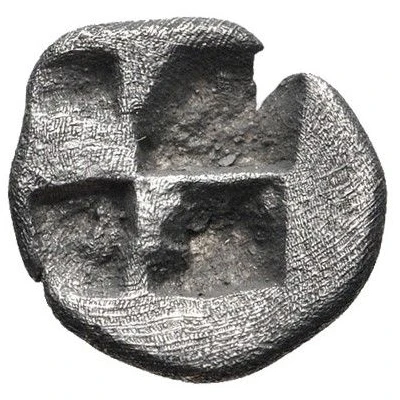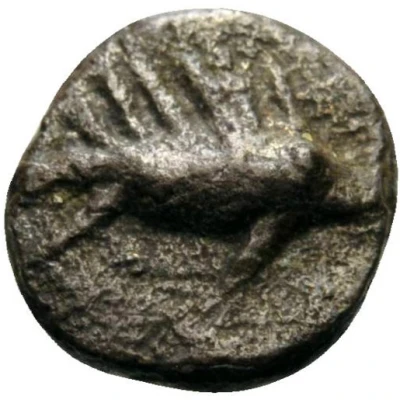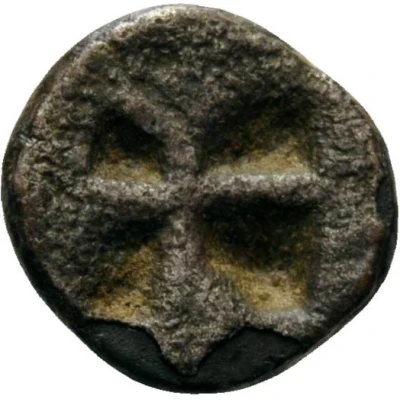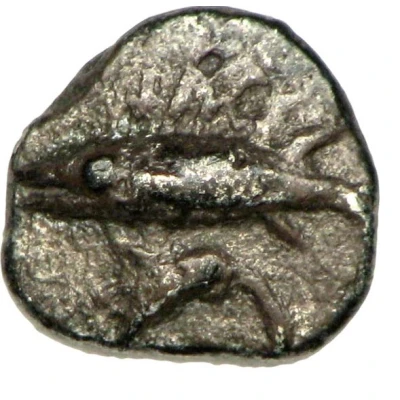
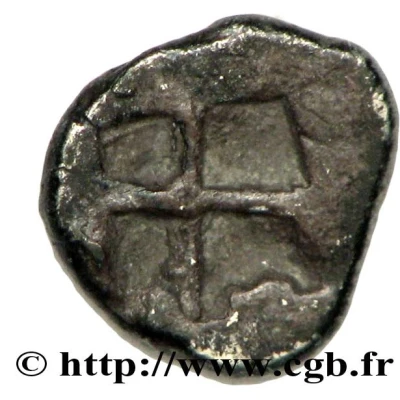

© CGB
Hemiobol 580 BC - 550 BC
| Silver | 0.44 g | 8 mm |
| Issuer | Kyzikos (Mysia) |
|---|---|
| Period | City administration (600 BC - 1 AD) |
| Type | Standard circulation coin |
| Years | 580 BC - 550 BC |
| Value | Hemiobol (1⁄12) |
| Currency | Drachm (500-27BC) |
| Composition | Silver |
| Weight | 0.44 g |
| Diameter | 8 mm |
| Shape | Round (irregular) |
| Technique | Hammered, Incuse |
| Demonetized | Yes |
| Updated | 2024-10-10 |
| Numista | N#93089 |
|---|---|
| Rarity index | 91% |
Reverse
Quadripartite incuse square
Interesting fact
The Hemiobol coin from Kyzikos (Mysia) is interesting because it features a unique blend of ancient Greek and Persian influences in its design. The obverse side of the coin depicts a lion's head, which was a common motif in ancient Persian coinage, while the reverse side features a Greek legend and a depiction of a grapevine, which was a symbol of fertility and prosperity in ancient Greek culture. This blending of cultural influences reflects the complex history of the region and the cultural exchange that occurred between the ancient Greeks and Persians.
